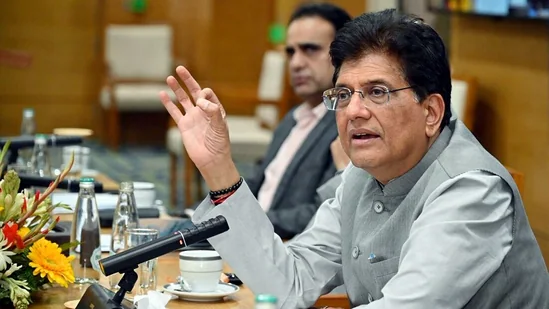PM Modi Lays Foundation for ₹42,000 Crore Mahi-Banswara Nuclear Power Project
- MGMMTeam

- Sep 27
- 4 min read
Prime Minister Narendra Modi, during his visit to Rajasthan on September 25, 2025, laid the foundation stone of the Mahi Banswara Rajasthan Atomic Power Project (MBRAPP). The nuclear power facility, worth ₹42,000 crore, is set to become one of the largest clean energy initiatives in the country. The event also saw the inauguration and launch of projects worth over ₹1.22 lakh crore, covering diverse sectors such as renewable energy, water supply, infrastructure, healthcare, and transport, underscoring the government’s push for holistic development in the region.

Technical and Institutional Framework
The Mahi-Banswara project will house four 700 MW indigenous pressurized heavy water reactors (PHWRs), giving it a combined installed capacity of 2,800 MW. It will be developed by Anushakti Vidhyut Nigam Ltd. (ASHVINI), a joint venture between the Nuclear Power Corporation of India Ltd. (NPCIL) and NTPC. This partnership marks NTPC’s formal entry into the nuclear power sector, with NPCIL bringing its expertise in nuclear technology and safety, while NTPC contributes its financial strength and project-management capabilities.
The project is designed under the government’s “fleet mode” strategy, which standardizes reactor design, construction methods, and procurement processes. This approach is expected to reduce costs, improve efficiency, and accelerate the rollout of nuclear projects across India. Cooling water for the plant will be sourced from the Mahi River and the Mahi Bajaj Sagar Dam, ensuring a stable supply for reactor operations. The first unit is targeted to be operational by 2032, with the remaining units phased in over the following years.
Strategic Importance for India’s Energy Future
India has set ambitious climate and energy targets, including 500 GW of non-fossil capacity by 2030 and long-term goals of 100 GW of nuclear power by 2047. The Mahi-Banswara project plays a vital role in achieving these objectives by offering reliable baseload electricity, something solar and wind alone cannot provide. Nuclear power also contributes to India’s energy security, reducing dependence on fossil fuels while complementing the growing renewable energy ecosystem.
The launch of the project coincided with the unveiling of multiple large-scale initiatives in Rajasthan. These included solar power projects worth ₹19,210 crore, transmission and grid infrastructure valued at over ₹13,000 crore, and water and irrigation works amounting to more than ₹20,000 crore. Roads, flyovers, hospitals, IT facilities, and railway services were also inaugurated, highlighting Rajasthan’s transformation into a hub for both traditional and clean energy investments.
Local Protests and Community Concerns
While the project promises to accelerate India’s clean energy journey, it has also sparked opposition from tribal communities in the Banswara region. Protesters have voiced concerns over displacement, inadequate compensation, and lack of clarity on rehabilitation measures. Many families, already affected by earlier dam projects, fear they may once again lose their land and livelihoods.
The local population is demanding priority employment for residents, greater investment in healthcare, education, and infrastructure, as well as transparency in environmental and radiation-safety data. Activists have also sought a commitment that a significant portion of the project’s CSR funds be directed toward regional development. The government has reassured citizens that their welfare will be protected, but the challenge of balancing national energy needs with local rights remains significant.
Challenges and the Road Ahead
Large-scale nuclear projects face a series of hurdles, including land acquisition, regulatory approvals, financing, and public trust. The Atomic Energy Regulatory Board (AERB) has already granted siting consent for the Mahi-Banswara project, but further environmental and forest clearances will be required. Ensuring strict compliance with safety standards will be essential to maintaining public confidence in nuclear energy.
Internationally, NTPC is also exploring partnerships with global firms to introduce small modular reactors (SMRs), signaling India’s intention to diversify its nuclear technology base. With the NPCIL–NTPC joint venture now set in motion, the Mahi-Banswara plant may become the model for future collaborations in India’s nuclear sector.
The MGMM Outlook
The foundation stone of the ₹42,000 crore Mahi-Banswara Rajasthan Atomic Power Project, laid by Prime Minister Narendra Modi, is a landmark moment in India’s pursuit of clean energy and energy security. With four 700 MW pressurized heavy water reactors planned under a joint venture between NPCIL and NTPC, the project will provide 2,800 MW of reliable baseload power. It aligns with India’s climate commitments, particularly the target of 500 GW of non-fossil capacity by 2030, and supports the nation’s vision of 100 GW of nuclear power by 2047. Alongside this nuclear initiative, Rajasthan also witnessed the launch of multiple infrastructure, solar, and water projects worth over ₹1.22 lakh crore, showcasing the government’s intent to transform the state into a hub of development and sustainability.
At the same time, the project faces strong resistance from tribal communities in Banswara, who fear displacement, inadequate compensation, and lack of clear rehabilitation plans. While the government assures that welfare and safety will be prioritized, local concerns around employment, healthcare, education, and environmental safeguards highlight the complex balance between national energy goals and regional rights. The Mahi-Banswara project thus represents not only a stride forward in India’s energy transition but also a reminder that inclusive development requires trust, transparency, and meaningful community participation.
(Sources: The Hindu BusinessLine, Hindustan Times, Times of India)




Comments